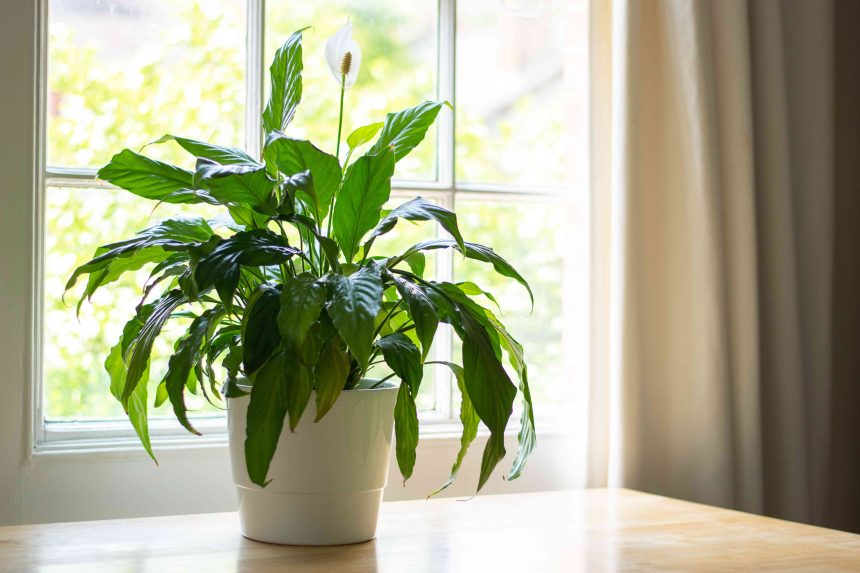Peace lilies have been popular houseplants for decades because they’re pretty, easy-care, and long-lived, making them a great choice for new or experienced plant lovers. With their shiny green foliage and pretty white flowers, or spathes–which actually are modified leaves–these plants add a splash of low-maintenance greenery to any room of the house.
Another plus is that peace lilies (Spathiphyllum spp) are forgiving when it comes to lighting. Although they prefer bright, indirect or medium light, they will tolerate low light conditions. In high light, they’ll bloom off and on all year long and grow quickly. Just don’t place them in direct sunlight, which will scorch their leaves. In low light, they’re less likely to bloom but still are attractive plants.
How Often To Water A Peace Lily
Peace lilies like to stay slightly moist, not soggy. Poke your finger in the soil before giving your plant a drink. If soil clings to your finger, but it’s not soaking wet, it’s fine to give it a small sip of water. You can water your plant every few days, if you like, to keep the soil from drying out too much.
Like all houseplants, you should water peace lilies as needed, never on a strict schedule. That’s because every home is different when it comes to temperature and humidity levels, so there are no rigid rules for watering. If your home is super-dry or your plant is growing quickly, it may need watered every few days. If it’s in a low light spot, it may grow more slowly and only need watered every week or ten days.
Your plant may grow more robustly at certain times of year, such as spring and summer, so that it will need watered more frequently. It also will grow quickly under a grow light. That’s why it’s imperative to stick your finger into the soil to test moisture levels every time before watering your peace lily.
Methods For Watering Peace Lilies
It’s fine to water your peace lily with a watering can, or to water from the bottom, if you prefer. You can bottom-water by placing the container in a sink filled with water and waiting for it to absorb for about 10 to 15 minutes. This can take longer than top-watering, so it’s better for petite pots, not large floor-sized plants.
Despite what you’ve read, these plants aren’t super-fussy about what kind of water you use.
Tap water is okay to use for peace lily plants, though rain water you’ve collected is also fine. No matter what, make sure the pot has drain holes so that any excess water can drip out.
One way to simplify things is to use a self-watering container, which allows the plant to take up as much water as it needs, when it needs it. This is a great option if you are sometimes forgetful about watering or if you travel frequently.
The good news is that although peace lilies like to stay ever-so-slightly moist, they will tolerate the top inch or two of soil drying out. So, if you occasionally forget to water, your plant should be fine. However, try to avoid allowing the plant to get so dry that it collapses. Although a wilted peace lily will perk back up after watering, it’s stressful to the plant.
Should You Mist A Peace Lily?
No matter what you’ve heard, misting does not benefit your peace lily—or any other houseplant, for that matter. That’s a long-held myth because misting does not raise the humidity level around plants. Most houseplants, including peace lily, adjust to average indoor humidity levels if you keep them watered correctly.
Should I Change My Watering Routine in Winter?
It depends; if your peace lily is receiving high light, such as from a sunny window, or it’s under a grow light, it may continue to grow quickly and need frequent watering. Also because our homes tend to be super-dry indoors in winter, your peace lily and other houseplants actually may need watered more frequently, not less frequently in winter. Your best bet is always to test the soil first with your finger before watering any houseplant.








